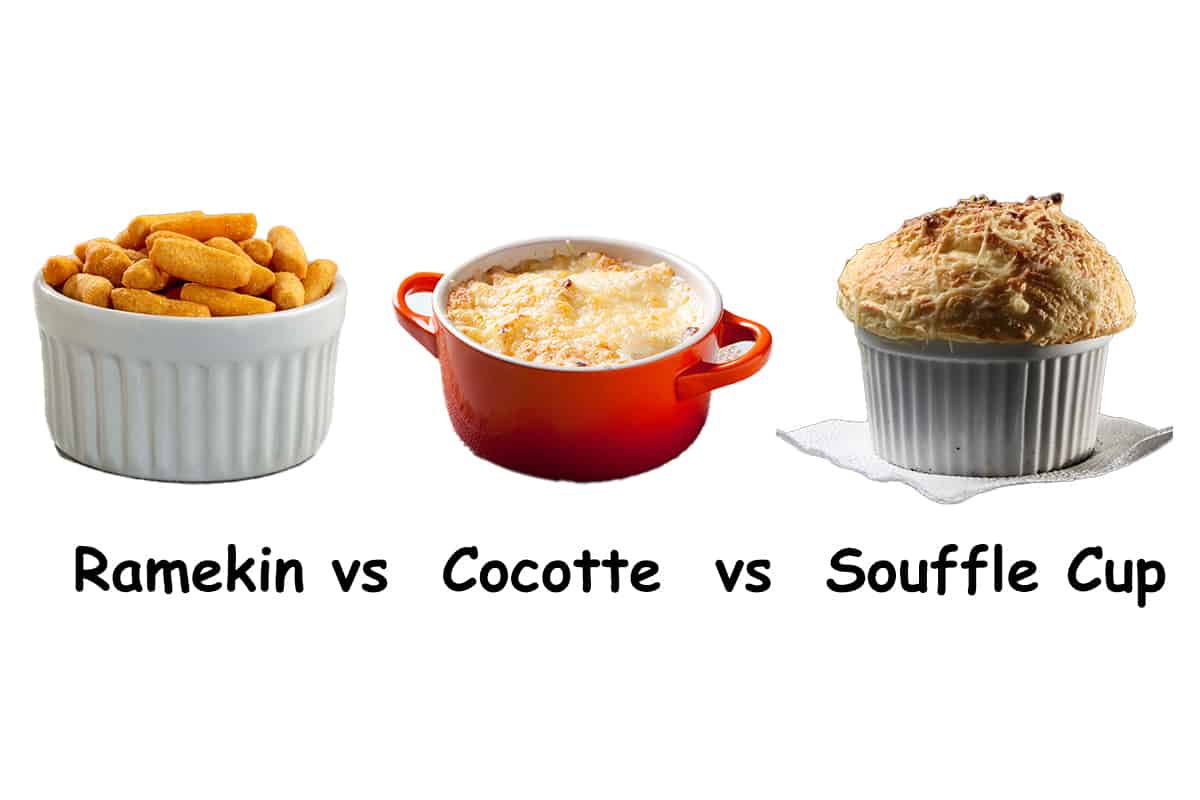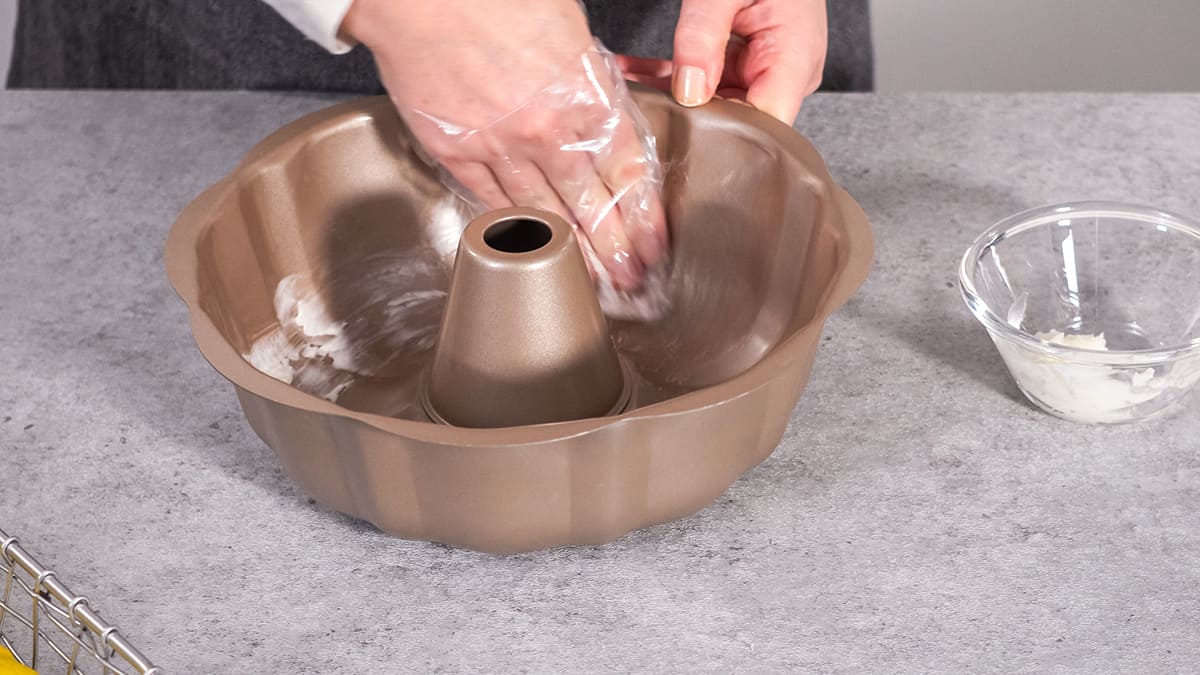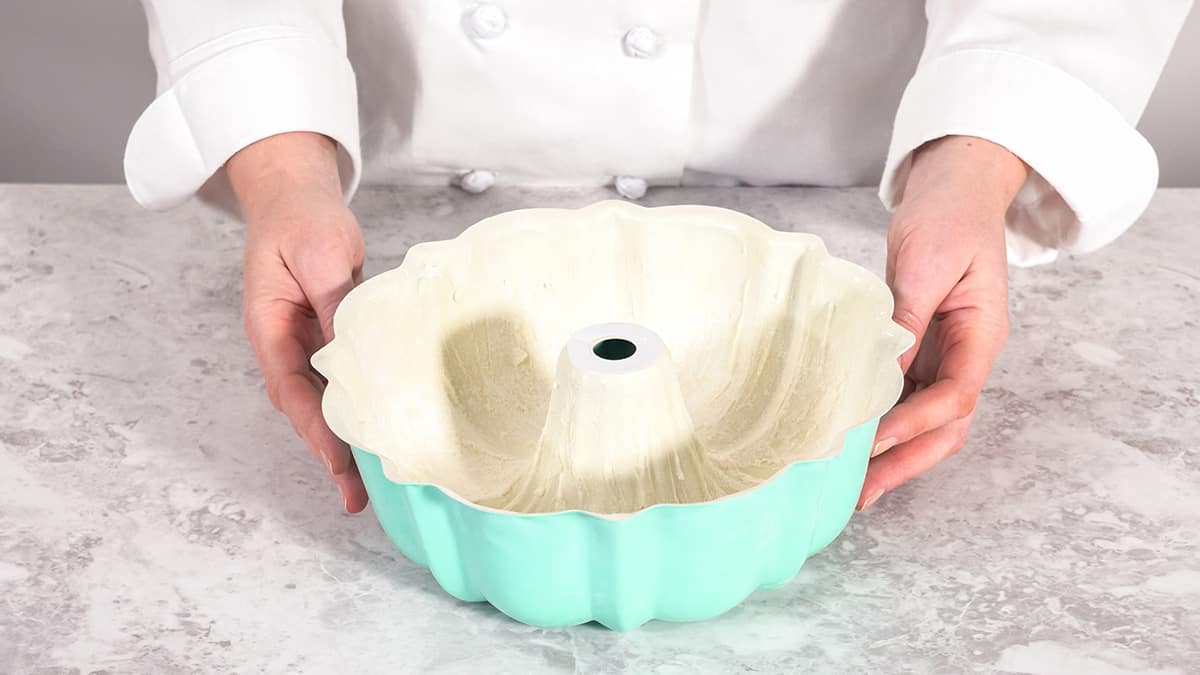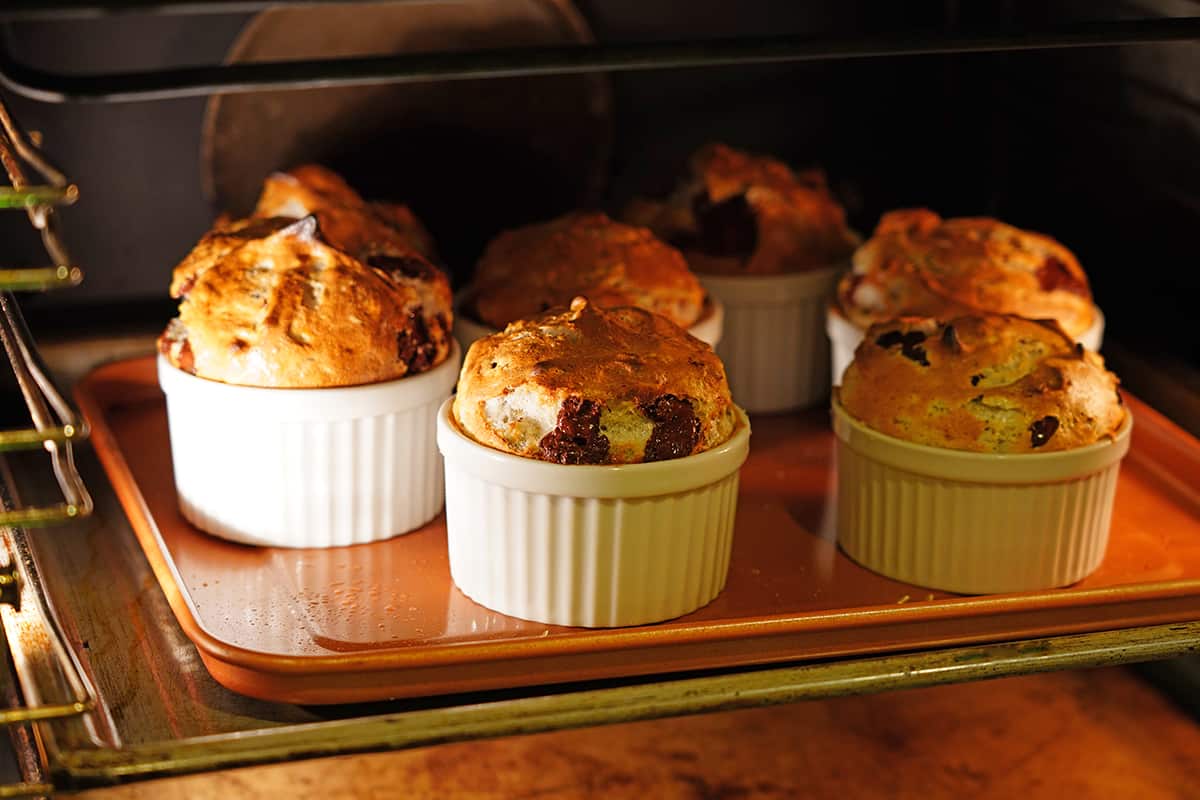If you’re stocking up your kitchen cabinets with baking dishes then you may have come across the terms ramekin, cocotte, and souffle cup. Unless you’re an experienced chef, you may be unaware of the differences between these types of baking dishes, and what they are used for.
Here we investigate what differentiates ramekins from cocottes and souffle cups, helping you to decide if you need any of these items, and which will be best suited for your own cooking style.
What is a Ramekin?

A ramekin is a small dish with a circular footprint. It can be made from any oven-proof material, including tempered glass, ceramic, or metal. Ramekins can be used for a wide range of purposes, such as individual dessert portions, holding dips and sauces, or serving snacking foods such as olives or nuts.
Ramekins come in various sizes, but the 6 oz ramekin is the most common because it is the most versatile. Typically you can expect ramekins to be anywhere from 1 to 2 inches in height, with a diameter of between 3 and 4 inches, though there are exceptions to this.
What is a Cocotte?
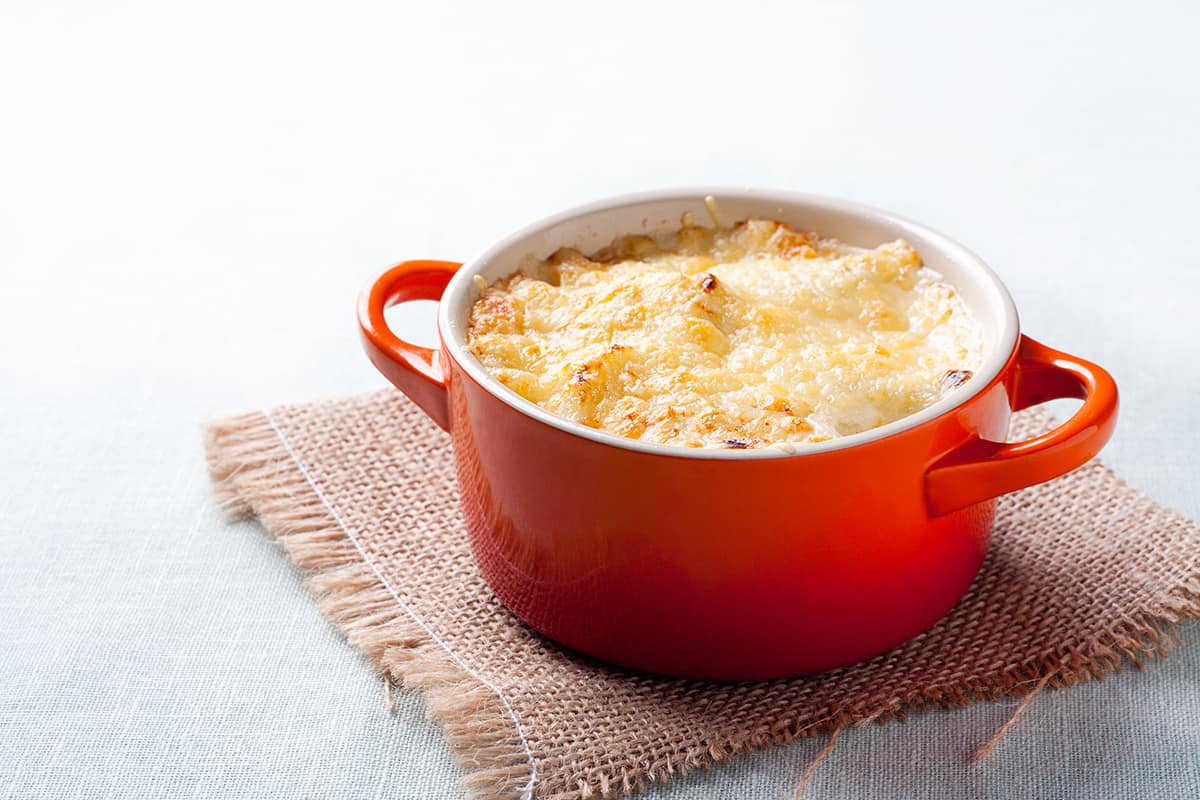
A cocotte is a type of baking dish, which literally translates from French to mean ‘casserole’. In France, the term ‘cocotte’ has been used since 1865 to describe the round or oval baking dish used to cook casseroles in. In cooking, the phrase ‘en cocotte’ refers to foods that have been baked in a small oven dish.
For example, ‘oeuf en cocotte’ means ‘baked eggs’. These dishes are today also known as French ovens or Dutch ovens. In fact, the French oven is believed to be based on the Dutch oven, which dates back as far as 1760. There is very little discernible difference between a Dutch oven and a cocotte, so if you know what a Dutch oven is, then you already know what a cocotte is.
These two types of baking dishes can be used interchangeably in cooking. A cocotte will be made from earthenware or cast iron. Traditionally, cast iron cocottes would not have had any coating, but today you can expect them to be coated in the enamel which prevents food from sticking and makes them much easier to keep clean.
What is a Souffle Cup?
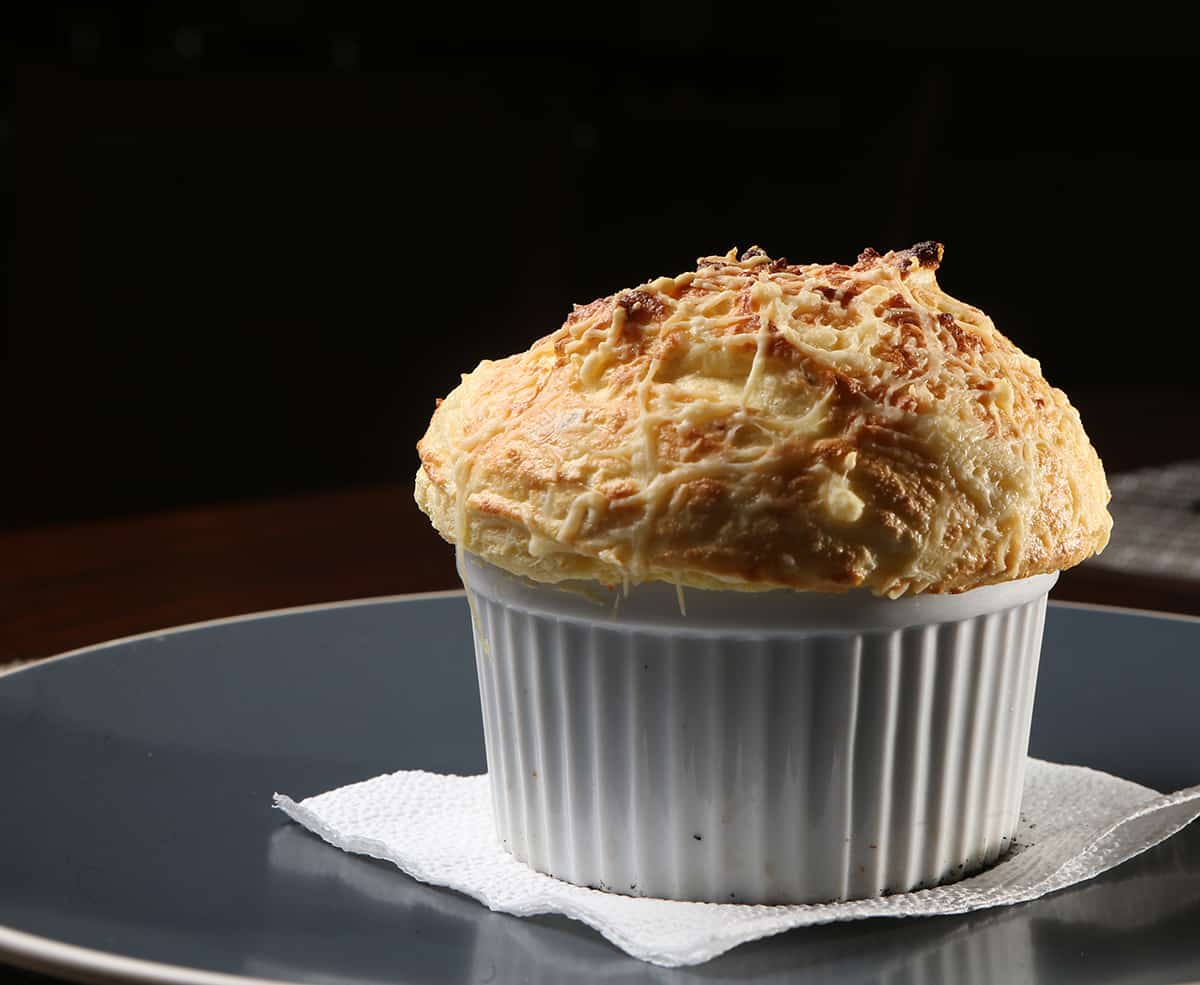
A souffle cup is a small dish much like a ramekin, which is specifically designed for cooking souffle in. You can find ramekin-sized souffle cups which are intended for serving individual portions of souffle, and you can also get wider souffle dishes that can be used in creating a larger souffle to share.
A souffle cup is so similar to a ramekin that most people find there is no need to own both because these items are interchangeable. Like ramekins, souffle cups can be utilized in a number of ways, for example, to serve dips, fondu, snacks, and sauces, as well as individual desserts such as mini cheesecakes.
Since souffles are cooked in the oven, a souffle cup will need to be made from an oven-proof material such as tempered glass. You can also get disposable souffle cups made from paper or cardboard, which are most commonly used as individual condiment containers, holding the likes of mayonnaise and ketchup to serve alongside fries.
What Is the Difference Between a Ramekin and A Souffle Cup?
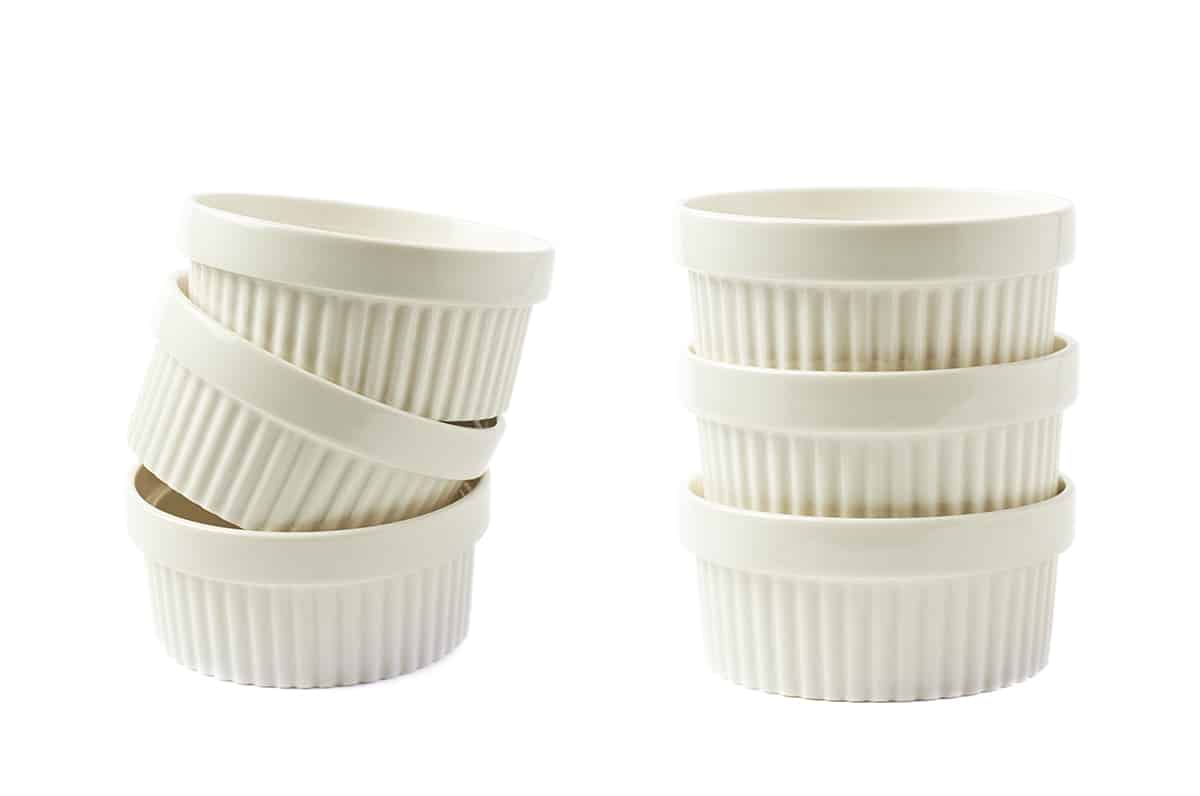
You may have seen a set of souffle cups advertised for sale and pondered over the fact that they look exactly like ramekins. The truth of the matter is that there is no definitive difference between a souffle cup and a ramekin. Both of these dishes can be used to cook souffles, and both of them can also be utilized for a variety of other purposes in both baking and serving.
In terms of disposable ramekins and souffle cups which are made from paper, these are most commonly used to serve condiments and sauces. They are the perfect size for individual portioning, which can be useful for baking desserts, as well as serving side dishes and sauces or dips.
How Does a Cocotte differ from a Ramekin and Souffle Cup?
A cocotte is quite different from a ramekin and souffle cup in terms of its size, as well as its design.
Size
A cocotte is a type of small casserole dish, but although it is small it is still considerably bigger than a ramekin or souffle cup. A cocotte can be used for individual portions of soup, stews, casserole, and pasta bakes, but it would be too large for serving an individual portion of dessert or ketchup.
Meanwhile, the smaller size of ramekins and souffle cups makes them ideal for individual dessert portions, and they can also be utilized for a range of other uses, for example, individual condiment servings, or for serving olives in.
Lid
Another difference between a cocotte and a ramekin or a souffle cup is the fact that a cocotte will have a lid, while ramekins and souffle cups do not. The lid on a cocotte is used to help baste the food held inside the dish, keeping it moist and tender. By keeping the lid on your cocotte while cooking you can also help prevent any juices from splattering.
By comparison, ramekins and souffle cups do not need lids because they generally aren’t used to cook anything which would need to be kept moist or contained. More commonly, ramekins and souffles will be used in the making of cheesecakes, souffles, creme brulees, or individual baked eggs.
Interestingly, when cooking an individual portion of baked eggs, known in French as ‘oeuf en cocotte’, you do not necessarily need a cocotte, and instead, you can use a ramekin or souffle cup because they are the perfect size to hold one or two eggs.
Shape
While ramekins and souffle cups have a perfectly circular footprint, a cocotte can be round or oval shaped. The shape of a cocotte does not affect its use, and is purely for visual effect.
Handles
The final difference between cocotte, ramekins, and souffle cups is the fact that cocottes have handles. The two handles will be positioned on either side of the cocotte, making it easier to pick the dish up with oven gloves when you are getting it out of the oven.
Do You Need a Ramekin, Cocotte, and Souffle Cup in the Kitchen?
If you run a catering service then it’s always a good idea to be prepared to make any dish a client asks you for. Souffles are popular at celebratory events because they radiate sophistication and elegance, so it’s likely you will need a souffle cup or ramekin in your catalog of cooking items.
For home kitchens, souffles are rarely baked unless you’re throwing a fancy dinner party, but even then you won’t need a specific souffle cup and can use a ramekin instead. Most people find ramekins very useful to have in the kitchen because they are so versatile.
A cocotte is also a great piece of kitchen equipment if you enjoy baking casseroles and stews, but you could also make these in a large casserole dish or a lasagne dish wrapped in aluminum foil.
